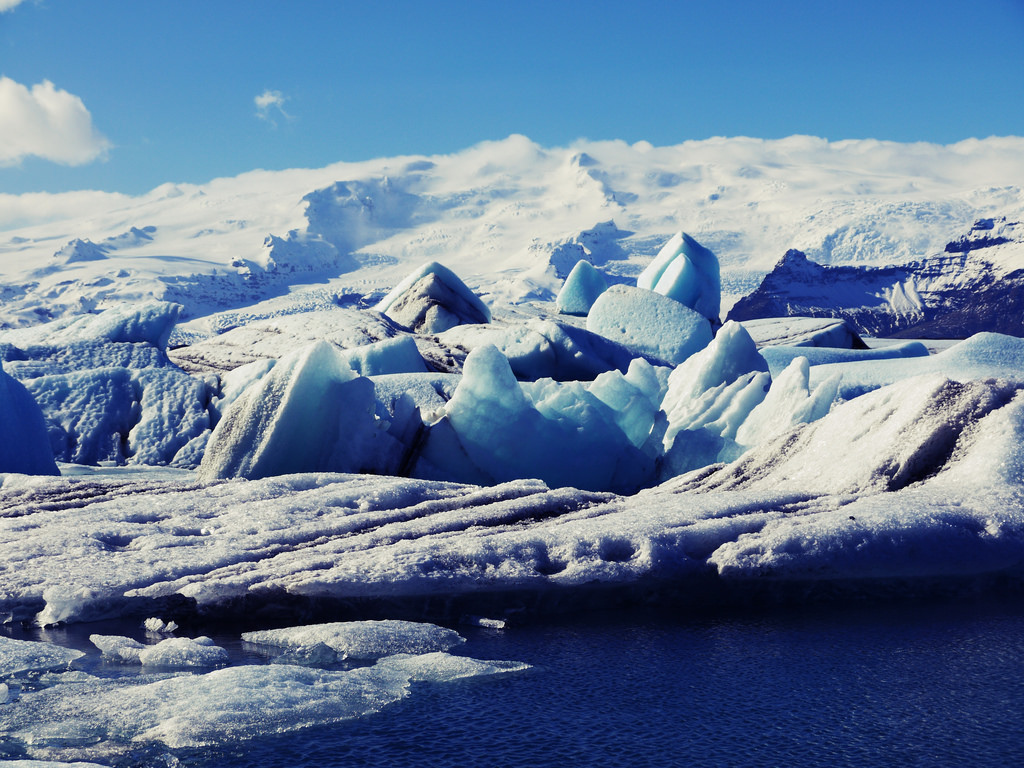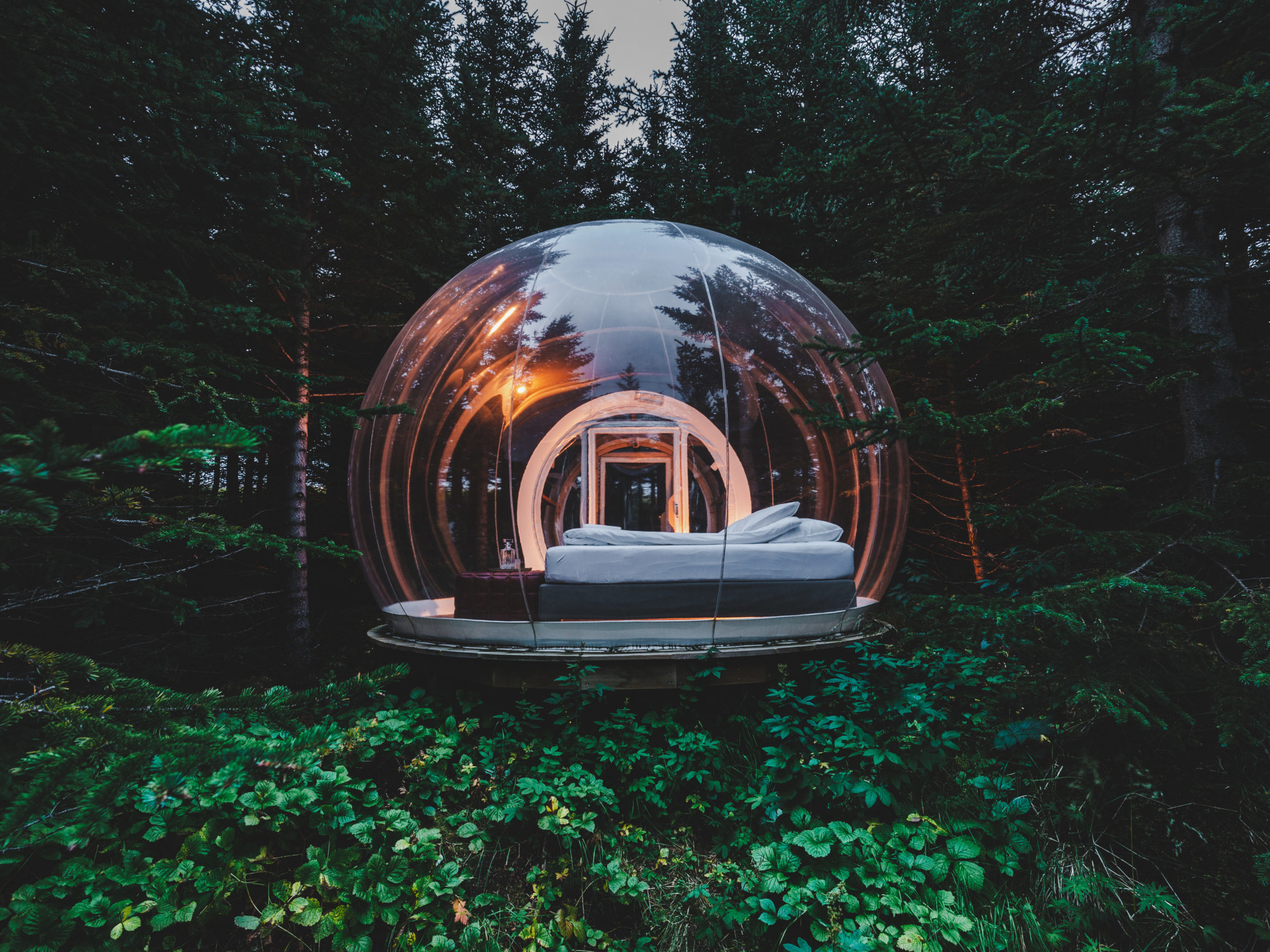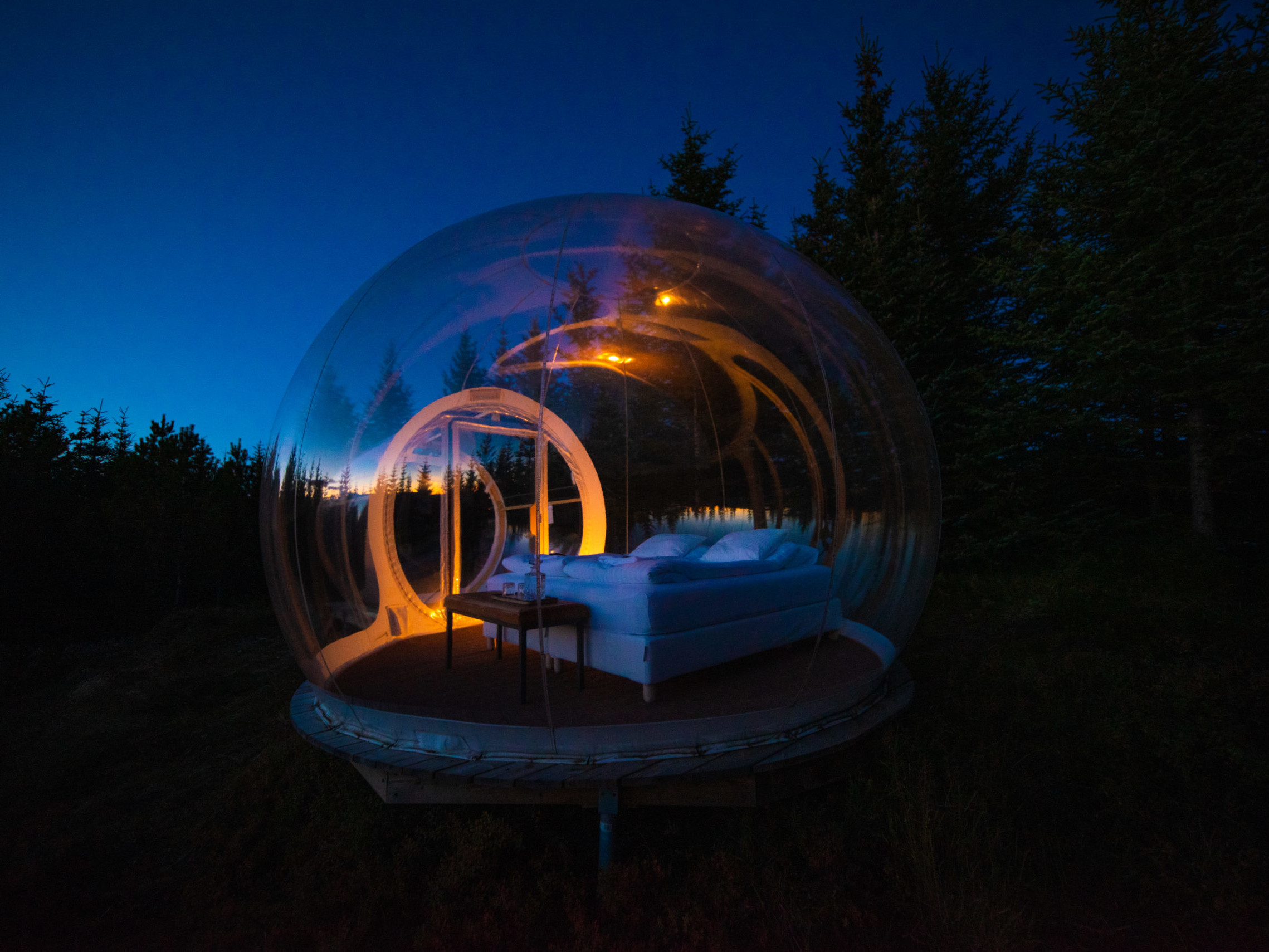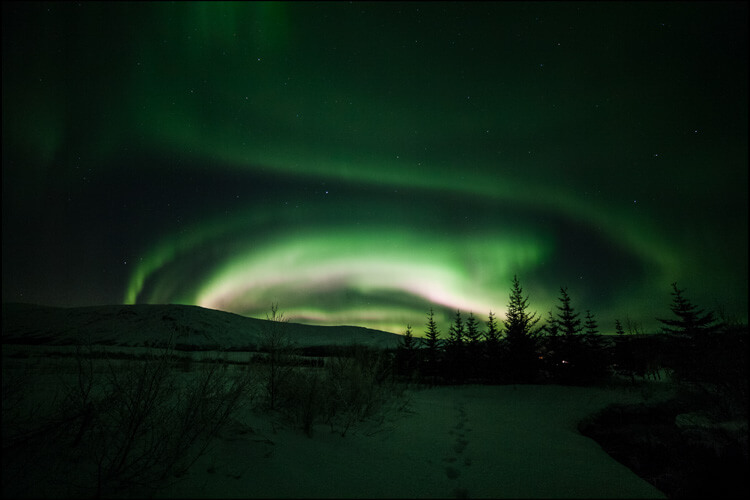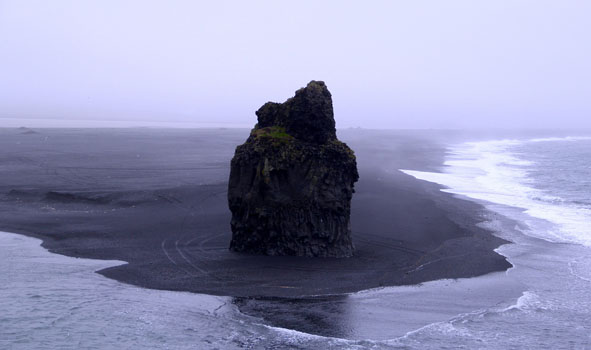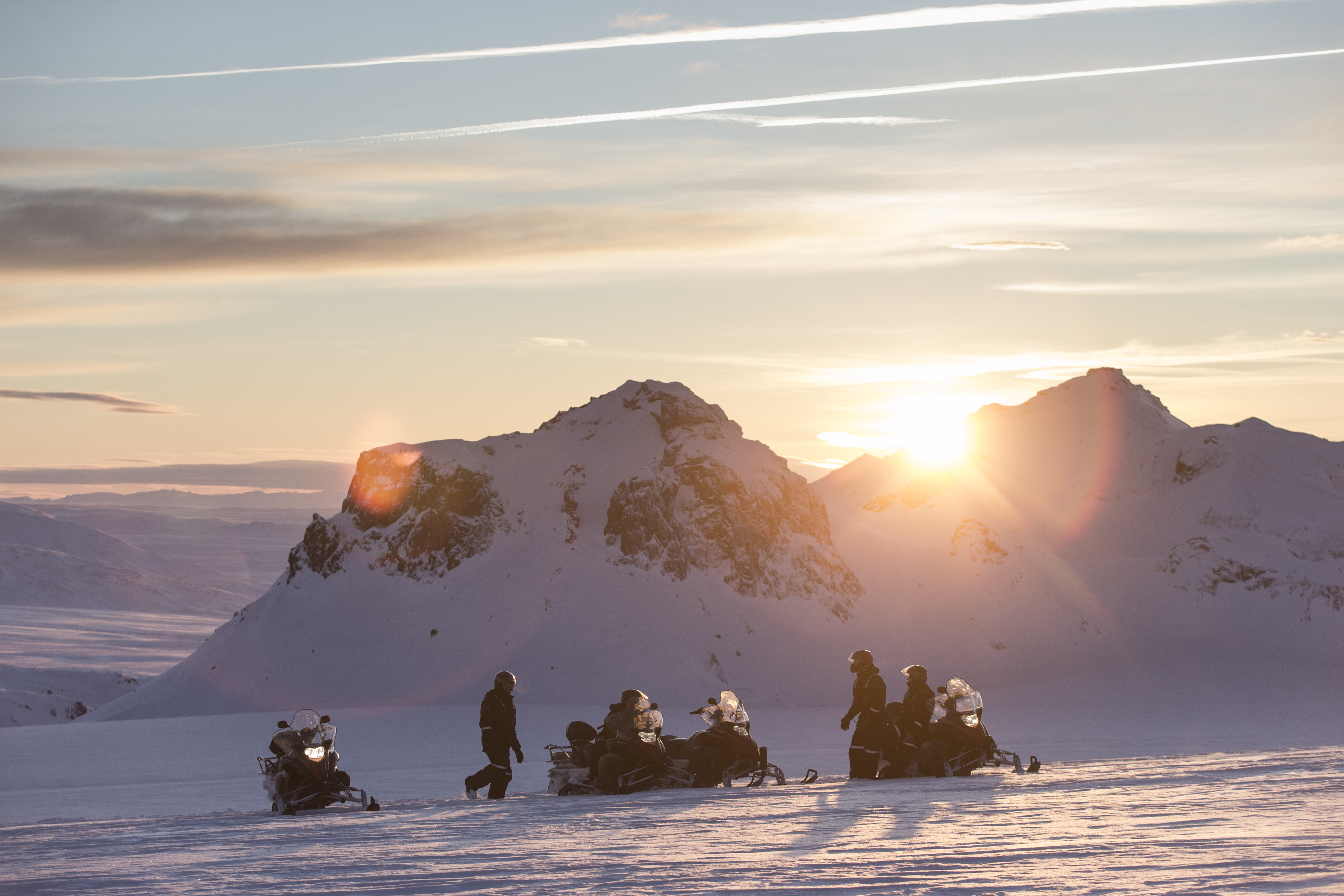Most Picturesque Glaciers in Iceland
Iceland is widely known as ‘The Land of Fire and Ice,’ because both volcanoes and glaciers are dotted around this region. Glaciers are huge, large and persistent ice blocks that only form on a piece of land where snow stays in one place long enough to turn into ice. This snow takes not years but centuries to transform into thick ice masses. Glaciers are unique because these can shift places by crawling forward, which happens due to their sheer mass. This characteristic is akin to slow rivers. Glaciers although are persistent but once these start flowing, their deformation also starts because flow creates cracks, crevasses and sometimes even caves. Many glaciers and volcanoes have formed atop active volcanoes in Iceland and after eruption of these volcanoes the ice above the glacier quickly melts. This creates destructive rivers known as “jökulhlaup”.
Vatnajökull glacier
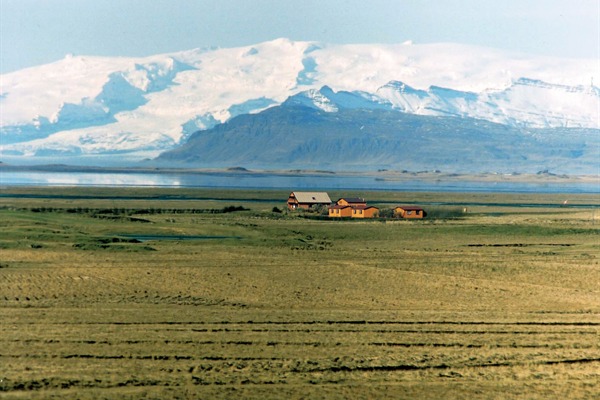
This is the largest glacier not only in Iceland but in entire Europe. The picture is from one of the icecaves in Vatnajökull glacier. It is located in the south-east area of Iceland. It is so huge that many glacial tongues have formed on all of its sides, just like almost all of the large glaciers found in Iceland. Each tongue has separate name as well and it is not possible to list all names here because these are so many. Most notable one is Öræfajökull glacier, which is a famous hiking point.
Vatnajökull is also popular because Iceland’s highest peak Hvannadalshnjúkur and most active volcano system Grímsvötn are located here.
Svínafellsjökull glacier in Vatnajökull National Park
Located here is the gorgeous glacial lake Jökulsárlón, which can be found on the south-eastern end of the glacier. The entire glacier is covered by Vatnajökull National Park as it happens to be the largest national park in Europe with its area of 12,000Km2.
Langjökull glacier
This is ranked as the second largest glacier in the country. Langjökull means ‘Long Glacier,’ and the name has been derived from its shape. This glacier is located in the western side of the Icelandic highlands. The glacier is easily visible from Geysir. This glacier serves as a popular snowmobiling spot along with The Golden Circle. Two active volcanoes are also located in Langjökull glacier.
Hofsjökull glacier
Ranked as the third biggest glacier in this region, Hofsjökull glacier is located in the Mid-Highlands. It happens to be the largest active volcano in the country and serves as a shield with caldera. Hofsjökull glacier is the primary source of numerous rivers in Iceland including the country’s longest river Þjórsá. The south and north of the country are connected by the Kjölur road that runs between Hofsjökull and Langjökull.
Mýrdalsjökull glacier and Eyjafjallajökull glacier
This is Iceland’s fourth largest glacier and is located right next to the country’s sixth largest glacier Eyjafjallajökull. Both these glaciers are located in Iceland’s south side. It is true that Mýrdalsjökull bigger than Eyjafjallajökull and contains Iceland’s one of the largest and most active volcano, Katla. But, Eyjafjallajökull has become popular recently because of its eruption in a very small volcano back in 2010. There is a popular hiking spot that is located between these two volcanoes known as Fimmvörðuháls. People can easily get on top of the recently erupted volcano, where now a warm, newly formed mountain can be found.
Drangajökull glacier
Drangajokull glacier can be found in the Westfjords. It is Iceland’s fifth largest glacier and the only one that hasn’t decreased in size over the years. It also is the only glacier this is located below 1000m completely.
Snæfellsjökull glacier
Snaefellsjokull glacier is the 13th largest glacier in Iceland and unfortunately it is decreasing in size rapidly too. Nonetheless, it is still counted among the most famous glaciers in Iceland. This glacier is located at the tip of Snæfellsnes peninsula and can be viewed like a crown alongside the Faxaflói bay on a clear day from Reykjavík. This glacier is termed as the jewel of one of the three national parks in Iceland, the Snæfellsjökull National Park. Similar to various other glaciers in Iceland, Snæfellsjökull also is a cone shaped volcano called stratovolcano. It became eternally popular when it featured in Jules Verne’s Journey to the Centre of the Earth as the earth’s central entry point. For the very first time in recorded history the summit became ice free, which happened in August 2012.
Iceland is widely known as ‘The Land of Fire and Ice,’ because both volcanoes and glaciers are dotted around this region. Glaciers are huge, large and persistent ice blocks that only form on a piece of land where snow stays in one place long enough to turn into ice. This snow takes not years but centuries to transform into thick ice masses. Glaciers are unique because these can shift places by crawling forward, which happens due to their sheer mass. This characteristic is akin to slow rivers. Glaciers although are persistent but once these start flowing, their deformation also starts because flow creates cracks, crevasses and sometimes even caves. Many glaciers and volcanoes have formed atop active volcanoes in Iceland and after eruption of these volcanoes the ice above the glacier quickly melts. This creates destructive rivers known as “jökulhlaup”.
Vatnajökull glacier
This is the largest glacier not only in Iceland but in entire Europe. The picture is from one of the icecaves in Vatnajökull glacier. It is located in the south-east area of Iceland. It is so huge that many glacial tongues have formed on all of its sides, just like almost all of the large glaciers found in Iceland. Each tongue has separate name as well and it is not possible to list all names here because these are so many. Most notable one is Öræfajökull glacier, which is a famous hiking point.
Vatnajökull is also popular because Iceland’s highest peak Hvannadalshnjúkur and most active volcano system Grímsvötn are located here.
Svínafellsjökull glacier in Vatnajökull National Park
Located here is the gorgeous glacial lake Jökulsárlón, which can be found on the south-eastern end of the glacier. The entire glacier is covered by Vatnajökull National Park as it happens to be the largest national park in Europe with its area of 12,000Km2.
Langjökull glacier
This is ranked as the second largest glacier in the country. Langjökull means ‘Long Glacier,’ and the name has been derived from its shape. This glacier is located in the western side of the Icelandic highlands. The glacier is easily visible from Geysir. This glacier serves as a popular snowmobiling spot along with The Golden Circle. Two active volcanoes are also located in Langjökull glacier.
Hofsjökull glacier
Ranked as the third biggest glacier in this region, Hofsjökull glacier is located in the Mid-Highlands. It happens to be the largest active volcano in the country and serves as a shield with caldera. Hofsjökull glacier is the primary source of numerous rivers in Iceland including the country’s longest river Þjórsá. The south and north of the country are connected by the Kjölur road that runs between Hofsjökull and Langjökull.
Mýrdalsjökull glacier and Eyjafjallajökull glacier
This is Iceland’s fourth largest glacier and is located right next to the country’s sixth largest glacier Eyjafjallajökull. Both these glaciers are located in Iceland’s south side. It is true that Mýrdalsjökull bigger than Eyjafjallajökull and contains Iceland’s one of the largest and most active volcano, Katla. But, Eyjafjallajökull has become popular recently because of its eruption in a very small volcano back in 2010. There is a popular hiking spot that is located between these two volcanoes known as Fimmvörðuháls. People can easily get on top of the recently erupted volcano, where now a warm, newly formed mountain can be found.
Drangajökull glacier
Drangajokull glacier can be found in the Westfjords. It is Iceland’s fifth largest glacier and the only one that hasn’t decreased in size over the years. It also is the only glacier this is located below 1000m completely.
Snæfellsjökull glacier
Snaefellsjokull glacier is the 13th largest glacier in Iceland and unfortunately it is decreasing in size rapidly too. Nonetheless, it is still counted among the most famous glaciers in Iceland. This glacier is located at the tip of Snæfellsnes peninsula and can be viewed like a crown alongside the Faxaflói bay on a clear day from Reykjavík. This glacier is termed as the jewel of one of the three national parks in Iceland, the Snæfellsjökull National Park. Similar to various other glaciers in Iceland, Snæfellsjökull also is a cone shaped volcano called stratovolcano. It became eternally popular when it featured in Jules Verne’s Journey to the Centre of the Earth as the earth’s central entry point. For the very first time in recorded history the summit became ice free, which happened in August 2012.
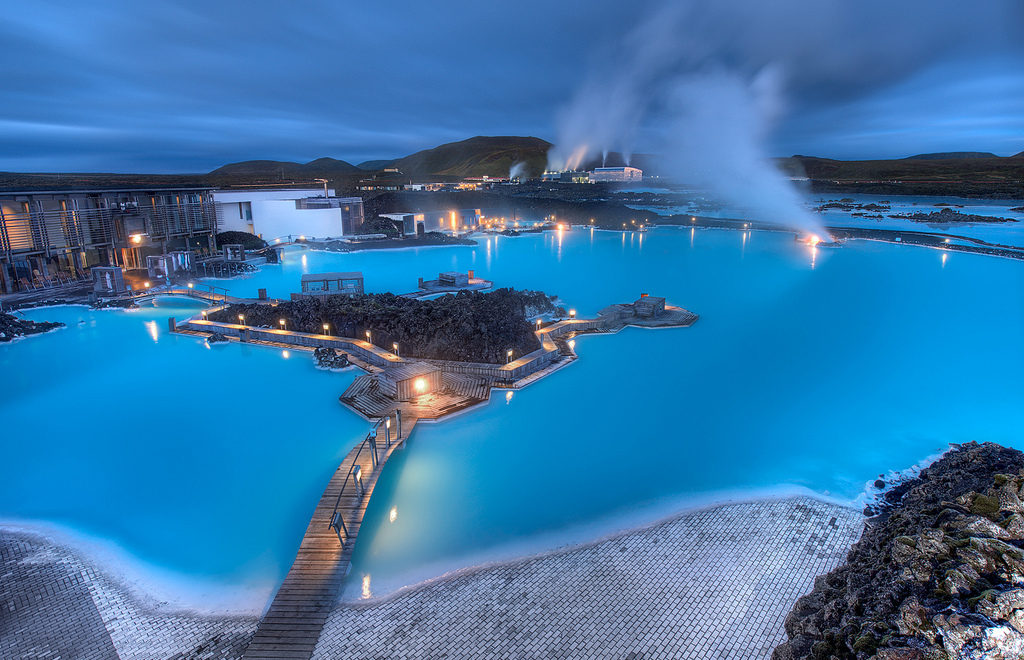
How To Plan A Northern Lights Vacation
How to Plan a Northern Lights Vacation
It’s a common misunderstanding that the northern lights appear every night throughout the year. We have years of experience in giving visitors advice on how to best plan a northern lights vacation, and we would like to share that experience with you.
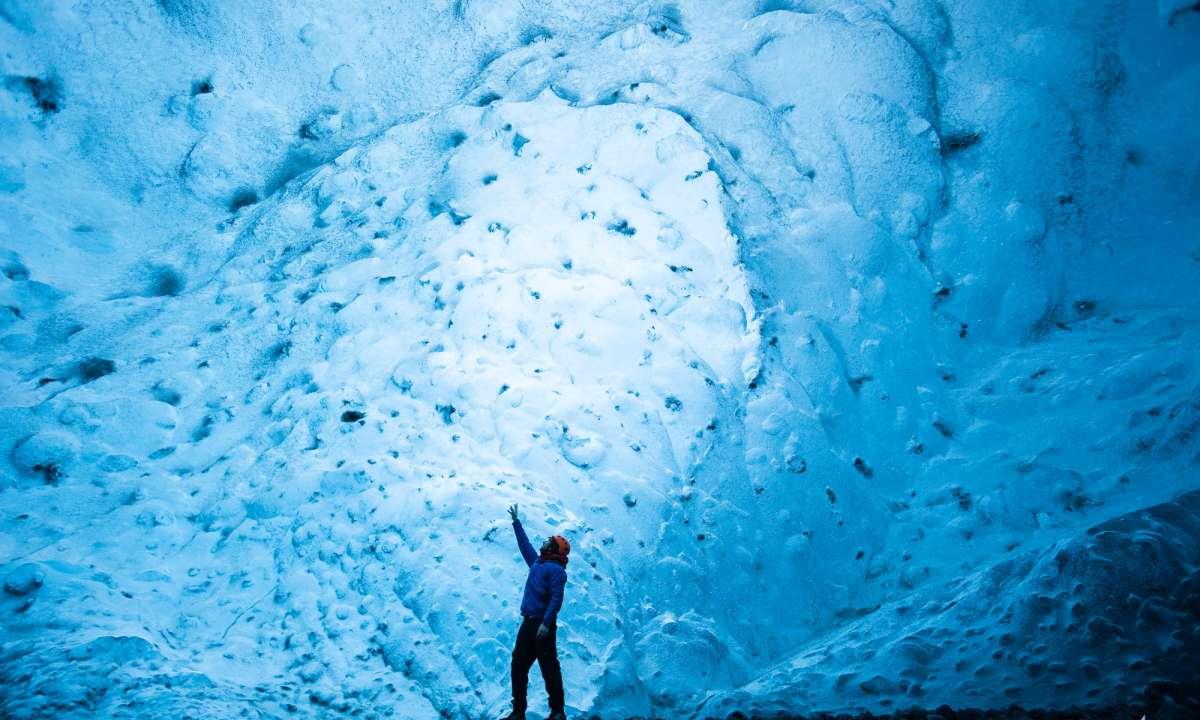
4 Tips for a Northern Lights Vacation
1. Timing
When you are planning a northern lights holiday, the timing is of course crucial. The northern lights can appear every month of the year but you need darkness in order to see them. For examples, even if the forecast shows active lights in July, you won’t see anything due to the 24 hour daylight. May – August are off season due to daylight.
The northern lights season starts at the beginning of September and ends mid April. In late August, when the days have started to get shorter, late at night you could get lucky and see the lights. The length of your stay is also vital as the lights often appear for 2-3 days and then there can be nothing for some days. We always recommend 4-5 days increase your chances.
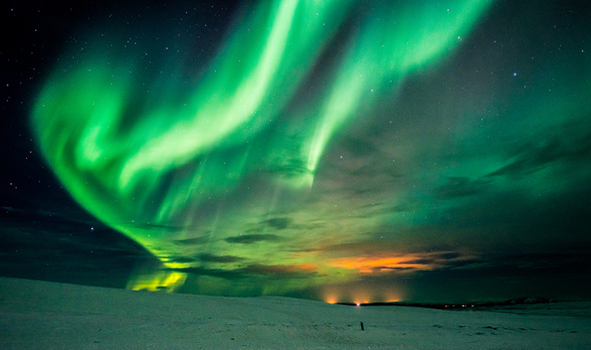
2. Plan for Winter
We always recommend visitors to plan their visit to Iceland as a nice winter holiday with loads of tours and activities. Enjoy all the wonderful things the country has to offer. Whether you choose a tour or to self drive, you will have an amazing time in the pure and unspoiled nature, the views and the sites.
The northern lights are a bonus and we recommend you think of them that way. Keep in mind the hours of daylight you will have during your stay. The months with the fewest hours of daylight are December and January but this gives you longer in darkness to hunt for the lights.
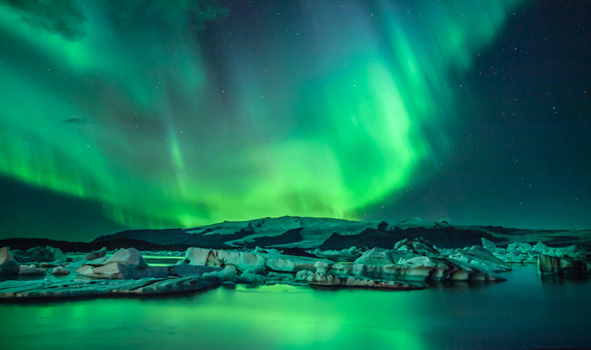
3. Check the Forecast
Keep a close eye on the northern lights forecast. You need to look for white or light green patches, area where there is little to no cloud coverage. There is a scale on the top right, the number here should be 3 (moderate) or higher. However, it’s always worth having a look at the sky, especially if it’s clear and you can see the stars. See the stars and you have a good chance if the lights are going to show.
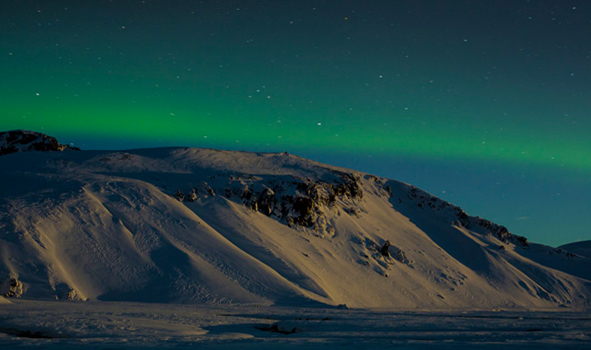
4. Plan Self-Drive Tours
Some people opt to self drive and hunt for the northern lights. Keep in mind that the road conditions in Iceland during winter can be difficult and dangerous, especially out in the countryside; slippery roads, snow and even blizzards.
Alternatively you can opt to take a tour, either a bus tour, super jeep or private tour. A combo tour is a great option to tick a few items off your bucket list.
We recommend the Golden Circle, Secret Lagoon, Bubble Tour.

- Choose the winter months
- Stay for 4-5 days
- Keep a close eye on the Aurora forecast
- Choose the hunt that suits you best, whether a self drive or tour
- Plan your holiday around what Iceland has to offer, northern lights are a bonus
The Black Beach in Vik
The Black Sand Beach in Vik
You might have heard a thing or two about the black sand beach in Vik and most likely you have seen lovely photos of the basalt rock formation that stick out of the sea and are called Reynisdrangar. But did you know that Vik is also a black beach and is the wettest place in Iceland? The black beach in Vik also allures people by its hidden caves and folklore stories.
Along the south coast of Iceland, with only about 300 residents, Vik í Myrdal still holds the title to be the biggest village in the southernmost part of Iceland. Just about 180 km away from Reykjavik, you will get to feel the black sand and the warm welcome of the locals.
A fair warning to all tourists is that walking for the next 70 km will not take you anywhere but close to endless shores. Hvolsvollur is about 80 km going north from Vik so the only service center you can most likely find are the ones in Vik.
Black Beach in Vik
The black sand beach in Vik is called by its local Reynishverfi and since it is famous because of it’s black sand and basalt sea stack, tour guides are more willing to take you 10 km just before you reach Vík. That is where the black sand beach with 68 m high boulders can be found.
You can also locate Reynisdragar on the western side of the 340m high Reynisfjall. Vik proper is located on its eastern side. Here is a map to where you can locate the black beach in Vik (“A” – Þjóðvegur, “B”-Reynishverfisvegur, “C” – Vik)
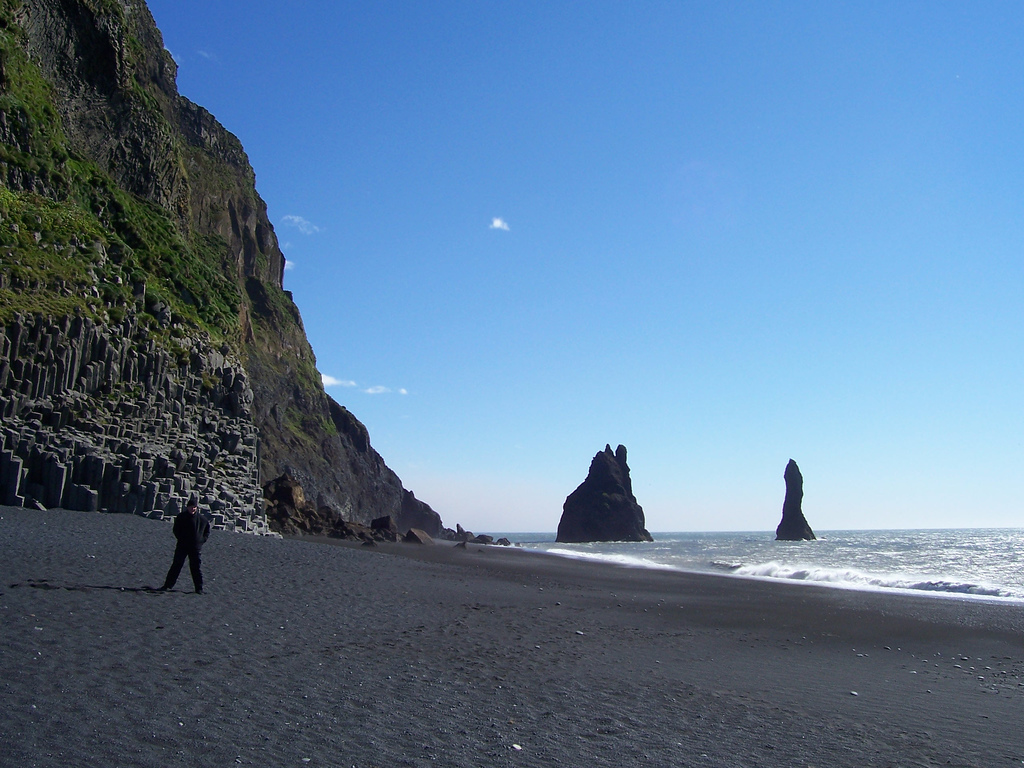
The steepest road you could ever encounter in Iceland is on a loran station, the highest part of the mountain ruins. This was built during the World War II serving as their watchtower or something. The cliffs are the solace of the ever adorable Puffins. Being in top of the mountain will obviously view the whole of Vik as well as Myrdalsjokull, the Dyrholaey and the amazing Reynisdrangar. It would definitely be an spectacular view from up there.
The rock formations are formed at the bottom of the cliff, from the mountain standing proudly in front of Reynisdrangar. The black beach is a long beach with stones and rocks everywhere after the shore.
The folklore is made upon these columnar creations. The legend says that these are the remains of two night trolls who were petrified as they were trying to pull three-masted ship out of the sea. The dawn caught them and had them turned into stone. Well of course, we all know now that these are created by lava flows that cooled down. It created hexagonal forms due to the contraction of the lava as it slowly flows and cools down. In overall view they have formed more like of a staircase. Climbing on these rock formations is easier than it looks as long as you watch your step on each of the blocks. When you reach the top, which is where you can view on different directions the places that are also rewarding to continue your expedition with.
The caves
If you don’t really dig like climbing up the staircase-like formations and a bit afraid of heights, then you can go south western of the Reynis Mountain foot. But ofcourse visit the caves only during low tides as the waves could be quite nasty on high tides. They would be as big as you will expect them to be and it would be dangerous to continue to the caves. And yet another Folklore is known to have surfaced in this cave. It was said that there was once a monster that used to reside in one of those caves but due to unfortunate circumstances for that certain monster, landslides that occurred about 100 years ago killed it and was never ever known to have seen again. The wonders in this place always inherits several folklore, whether they are true or not, respect still would be your best key of survival in such places. So help the locals preserve the natural wonders you have seen and please refrain from doing any vandalism or loitering at the Black Beach in Vik.
The Black Sand Beach in Vik
You might have heard a thing or two about the black sand beach in Vik and most likely you have seen lovely photos of the basalt rock formation that stick out of the sea and are called Reynisdrangar. But did you know that Vik is also a black beach and is the wettest place in Iceland? The black beach in Vik also allures people by its hidden caves and folklore stories.
Along the south coast of Iceland, with only about 300 residents, Vik í Myrdal still holds the title to be the biggest village in the southernmost part of Iceland. Just about 180 km away from Reykjavik, you will get to feel the black sand and the warm welcome of the locals.
A fair warning to all tourists is that walking for the next 70 km will not take you anywhere but close to endless shores. Hvolsvollur is about 80 km going north from Vik so the only service center you can most likely find are the ones in Vik.
Black Beach in Vik
The black sand beach in Vik is called by its local Reynishverfi and since it is famous because of it’s black sand and basalt sea stack, tour guides are more willing to take you 10 km just before you reach Vík. That is where the black sand beach with 68 m high boulders can be found.
You can also locate Reynisdragar on the western side of the 340m high Reynisfjall. Vik proper is located on its eastern side. Here is a map to where you can locate the black beach in Vik (“A” – Þjóðvegur, “B”-Reynishverfisvegur, “C” – Vik)The steepest road you could ever encounter in Iceland is on a loran station, the highest part of the mountain ruins. This was built during the World War II serving as their watchtower or something. The cliffs are the solace of the ever adorable Puffins. Being in top of the mountain will obviously view the whole of Vik as well as Myrdalsjokull, the Dyrholaey and the amazing Reynisdrangar. It would definitely be an spectacular view from up there.
The rock formations are formed at the bottom of the cliff, from the mountain standing proudly in front of Reynisdrangar. The black beach is a long beach with stones and rocks everywhere after the shore.
The folklore is made upon these columnar creations. The legend says that these are the remains of two night trolls who were petrified as they were trying to pull three-masted ship out of the sea. The dawn caught them and had them turned into stone. Well of course, we all know now that these are created by lava flows that cooled down. It created hexagonal forms due to the contraction of the lava as it slowly flows and cools down. In overall view they have formed more like of a staircase. Climbing on these rock formations is easier than it looks as long as you watch your step on each of the blocks. When you reach the top, which is where you can view on different directions the places that are also rewarding to continue your expedition with.
The caves
If you don’t really dig like climbing up the staircase-like formations and a bit afraid of heights, then you can go south western of the Reynis Mountain foot. But ofcourse visit the caves only during low tides as the waves could be quite nasty on high tides. They would be as big as you will expect them to be and it would be dangerous to continue to the caves. And yet another Folklore is known to have surfaced in this cave. It was said that there was once a monster that used to reside in one of those caves but due to unfortunate circumstances for that certain monster, landslides that occurred about 100 years ago killed it and was never ever known to have seen again. The wonders in this place always inherits several folklore, whether they are true or not, respect still would be your best key of survival in such places. So help the locals preserve the natural wonders you have seen and please refrain from doing any vandalism or loitering at the Black Beach in Vik.

What is the midnight sun of Iceland?
Midnight Sun in Iceland
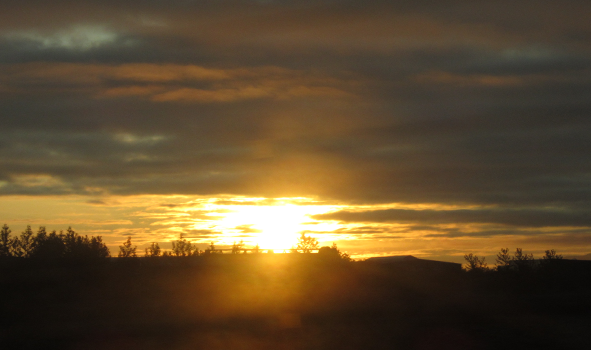
What is the Midnight Sun?
A natural phenomenon that occurs during the months of summer in some places in the north of the Arctic Circle or to the south of the Antarctic Circle in which the sun is visible at the local midnight time of a region is known as Midnight Sun. During the period of the summer solstice that approximately on June 21st in the north region and December 22nd in the southern regions, the sun is visible for a period of 24 hours, if the weather is fair. The potential of midnight sun occurring for a number of days increase as the poles are moving further from the Sun. Even though the midnight sun is defined by the polar circles, in reality, the midnight sun can be seen as much as a distance of 90KM outside the polar circle. The exact latitudes that the midnight sun reaches depends on the topography of the region and every year, it varies.
Who Sees the Midnight Sun?
Since there is no permanent area of residence in the southern parts of the Antarctic Circle, there are only a limited number of regions that experience the midnight sun – Yukon, Nunavut and Northwest Territories of Canada, Iceland, Norway, Sweden, Greenland, Finland, Russia and Alaska in the United States. In the northern part of some of the countries mentioned, the sun does not set for a period of 60 days during the summer. In the Svalbard region of Norway, the sun does not set at all from 19th April to 23rd August.
Some regions below the polar circle may experience midnight sun due to refraction of the atmosphere and the sun is a disk and not a point. But, places which exceed one degree below the polar circle does not experience the midnight sun. Iceland is known to experience midnight sun even though most of the region of the located slightly to the south of the Arctic Circle. At the poles, the period of sunlight is a little bit more than six months.
Common Questions
Now, when a person is visiting Iceland during the period of the Midnight Sun, a lot of questions crop up in his or her mind. When does the midnight sun in Iceland happen? For how long does the sunrise or sunset last? In Iceland, what is the time frame during which the midnight sun can be experienced? Is it possible to sleep during the midnight sun?
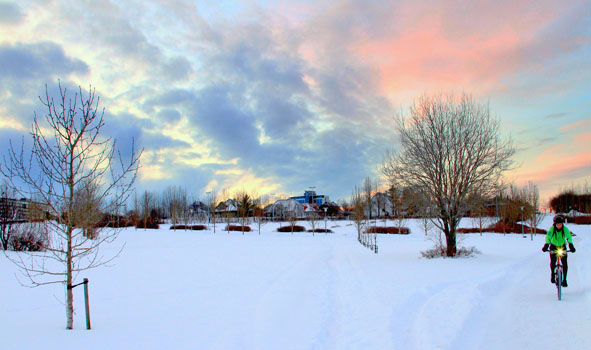
Summer and Winter in Iceland
During the summertime, in Iceland, the days are quite long. Iceland’s nights are bright from the period of late May to early August. This is quite unfathomable to some people and they have various questions about it. One of the most common questions about Iceland’s midnight sun is that if is it possible to sleep during the period of the midnight sun. The answer to this question is that it is quite possible. Just like a person can sleep with the lights on or in the middle of the day, a person can sleep during the period of the midnight sun. If a person requires complete darkness to sleep, he or she can use curtains to block out the midnight sun. After a period of dark winters, it can be a bit weird to have endless days. But as time goes by, the period of longs days becomes adjusted to the lifestyle of a person and if you want to do some sightseeing then you can do it all night and day long.
On the planet, the further you go north or south, the more the effect of summer and winter solstices that you can feel. The summer solstice in Iceland is the longest day of Iceland’s year and it happens during the 21st of June. In Reykjavik, the suns set after midnight and again rises before 3AM. The days are even longer in Akureyri or Ísafjörður due to fact that it was further north in the country. The winter solstice in Iceland is the shortest day there and it occurs on the 21st of December. This means that in Reykjavik, the sun rises around 11:30AM in the morning and sunset occurs at 3:30PM during the afternoon. The day is even shorter as you go further north in the country. In between this period of time, that the period between the longest and shortest days of the year, the days are either getting shorter or longer. This shortening and longevity can vary between a few seconds to a period of several minutes per day. Twice a year, equinoxes occur on the 21st of March and the 21st of September. During these days, the amount of daylight and darkness are equal in length.
When?
Generally speaking, in Reykjavik, the midnight sun occurs during the period from 16th to 29th June. These are the only days during which the sun sets after midnight in the region. If the consideration is taken into account that the sun will rise a few hours later, at approximately 3:30AM in the morning, it is still quite bright even though the sun wasn’t in the sky yet. These beautiful bright nights occur for up to a period of 3 months. The time frame is one and a half months before the 21st of June and one and a half months after the 21st of June.
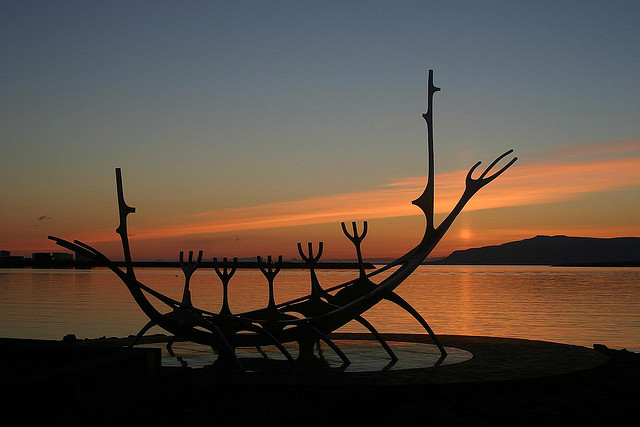
An incredible and beautiful picturesque display of the colorful and bright night sky is done due to the slow sunsets and sunrises. These bright skies tend to last for quite a long time and for several hours. When August begins, a few hours of the night can be quite dark, but it is not darker than dusk though. When August is ending and September is beginning, a couple of hours in the night will be quite dark that is pitch black dark. Iceland is truly a place of mystery and beauty and you can enjoy summertime and daytime activities for quite a long time due to the midnight sun. So, if you are interested in going to a place where you can enjoy more hours of the day without it affecting your crazy nightlife, then Iceland is definitely the place to visit. Things that you can do in Iceland even though it is night is that you can play golf or go on a tour of the Golden Circle in Iceland or enjoy the attractions that are there on Route 1 of Iceland.

